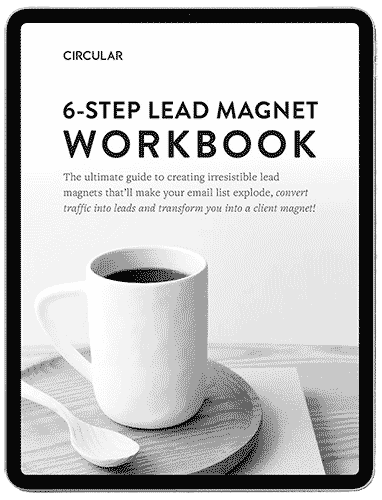Panic Attack Counseling Murray UT
Your heart pounds, your palms sweat, and the room starts to spin. You feel a wave of dread wash over you, and you’re not sure why. If this sounds familiar, you’re not alone. Many people in Murray, UT, experience the terrifying grip of panic attacks. But what if I told you there are powerful steps to not just managing these episodes, but stopping them altogether? In this article, I’m going to share seven powerful steps that can help you reclaim your calm and confidence.
I remember a client, lets call her Sarah, who came to me feeling defeated by her panic attacks. She was avoiding social situations and her world was getting smaller and smaller. Through our work together, she learned to understand her panic and use the very techniques we’re about to discuss. Today, she’s thriving, and you can too.
Step #1: Understanding the Panic Cycle
It’s so important to get what’s actually happening in your body when panic strikes. Think of it as your body’s alarm system, the “fight or flight” response, going off at the wrong time. This is a natural, protective instinct. But when there’s no real danger, it just feels awful. The National Institute of Mental Health says that understanding this response is a key part of therapy. The real trap is the fear of having another panic attack. This fear can actually trigger the very thing you’re afraid of creating a vicious cycle. One of the most effective ways to break this cycle is with a type of counseling called cognitive-behavioral therapy or CBT. It helps you see the connection between your thoughts, feelings, and actions.
Step #2: The Power of Your Breath
When panic hits, your breathing gets shallow and fast. This is one of the first things to get out of control. But here’s the good news, you can take back control with your breath. A simple and incredibly powerful technique is the “5-5-5” rule. You breathe in for 5 seconds, hold your breath for 5 seconds, and then breathe out for 5 seconds. This slow, deep breathing sends a signal to your brain that everything is okay. It helps to counteract the physiological effects of panic. It’s not just about distracting yourself, you’re actively calming your nervous system. It’s a simple thing, but it can make a huge difference in the moment.

Step #3: Grounding Yourself in the Present
Panic attacks can make you feel like you’re detached from reality. Grounding techniques are like an anchor, they pull you back to the present moment. A really easy one to remember is the “3-3-3” rule. Look around you and name three things you see. Then, listen for three things you can hear. Finally, move three parts of your body, like your fingers, toes, and head. This simple exercise forces your brain to focus on your immediate surroundings, not the panic. You can also try holding a cold object, like an ice cube, or splashing cold water on your face. The shock of the cold can be enough to snap you out of the panic spiral.
Step #4: Challenging Your Anxious Thoughts
Panic attacks are often fueled by what we call catastrophic thinking. Your mind jumps to the worst-case scenario. “I’m having a heart attack,” or “I’m going to lose control.” These thoughts are powerful, but they’re not necessarily true. Cognitive restructuring is a fancy term for learning to challenge these thoughts. When a scary thought pops into your head, ask yourself, “What’s the evidence for this thought?” and “What’s a more realistic way to look at this?” For example, instead of “I’m having a heart attack,” you could say, “This is just a panic attack. It’s uncomfortable, but it’s not dangerous.” It takes practice, but it’s a skill that can dramatically reduce the power of panic.
Step #5: Facing Your Fears (Gradually)
This one might sound scary, but it’s one of the most effective ways to overcome panic in the long run. It’s called exposure therapy, and it’s not as intimidating as it sounds. With the guidance of a therapist, you gradually expose yourself to the situations or physical sensations that you fear. For instance, if you’re afraid of feeling dizzy, your therapist might have you spin in a chair for a few seconds. The goal is to learn, in a safe and controlled way, that these feelings are not dangerous. Over time, your brain learns to stop associating these things with panic. It’s about building your confidence, one small step at a time. According to research from Stanford University, this gradual exposure is a highly effective treatment.
Step #6: The Importance of a Panic Attack “Action Plan”
When you’re in the middle of a panic attack, it’s hard to think clearly. That’s why having a plan in place ahead of time is so important. Sit down when you’re feeling calm and write out a step-by-step guide for yourself. This “action plan” can include your favorite breathing exercises, grounding techniques, and a list of supportive friends or family members you can call. Just knowing you have a plan can make you feel more in control. It’s like having a first-aid kit for your emotions. Keep it on your phone or in your wallet so it’s always with you.
Step #7: The Role of Professional Support in Murray, UT
You don’t have to go through this alone. Working with a counselor who specializes in panic attacks can make all the difference. We can help you identify your specific triggers and develop a personalized plan for managing your panic. There are different types of therapy that can help, and we’ll work with you to find the approach that’s right for you. Having a knowledgeable and compassionate guide in your corner can give you the confidence and support you need to finally break free from the grip of panic.
Ready to take back control? Contact us today to schedule a confidential consultation and start your journey towards lasting peace of mind.

Frequently Asked Questions
Can counseling help with panic attacks?
Yes, absolutely. Counseling is a very effective way to treat panic attacks. A therapist can help you understand what’s causing your panic and teach you practical skills to manage and prevent future attacks.
What therapy is best for panic attacks?
Cognitive-behavioral therapy, or CBT, is generally considered the most effective therapy for panic attacks. It helps you change the thinking patterns and behaviors that contribute to your panic. Exposure therapy can also be very helpful.
What is the 5 5 5 rule for panic attacks?
The 5-5-5 rule is a simple breathing exercise. You breathe in for 5 seconds, hold your breath for 5 seconds, and then breathe out for 5 seconds. This helps to calm your nervous system during a panic attack.
What is the 3 3 3 rule for panic attacks?
The 3-3-3 rule is a grounding technique. You look for and name three things you can see, three things you can hear, and you move three parts of your body. It helps to bring your focus back to the present moment.

